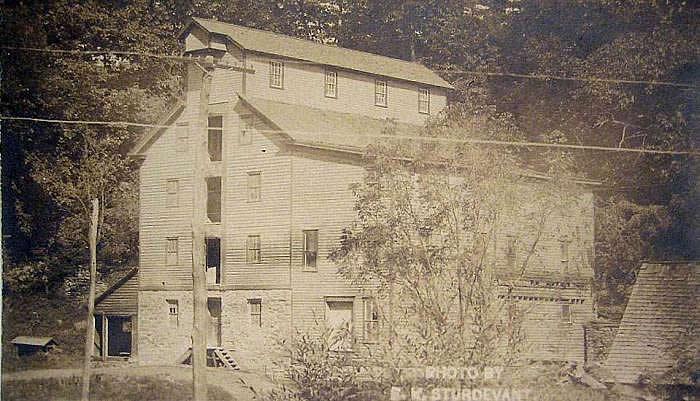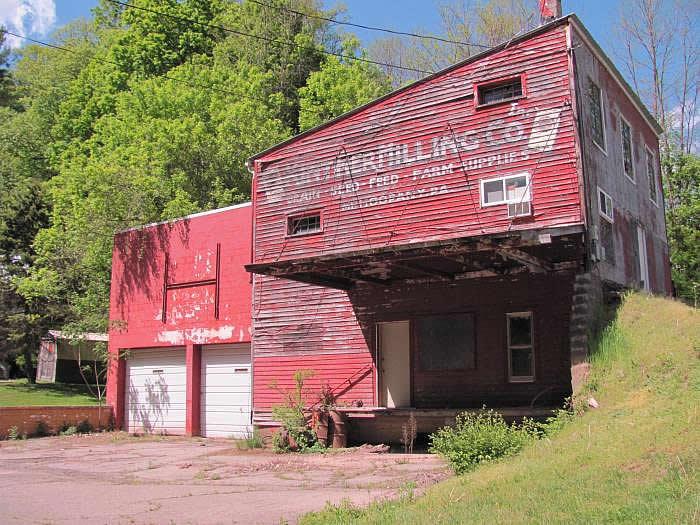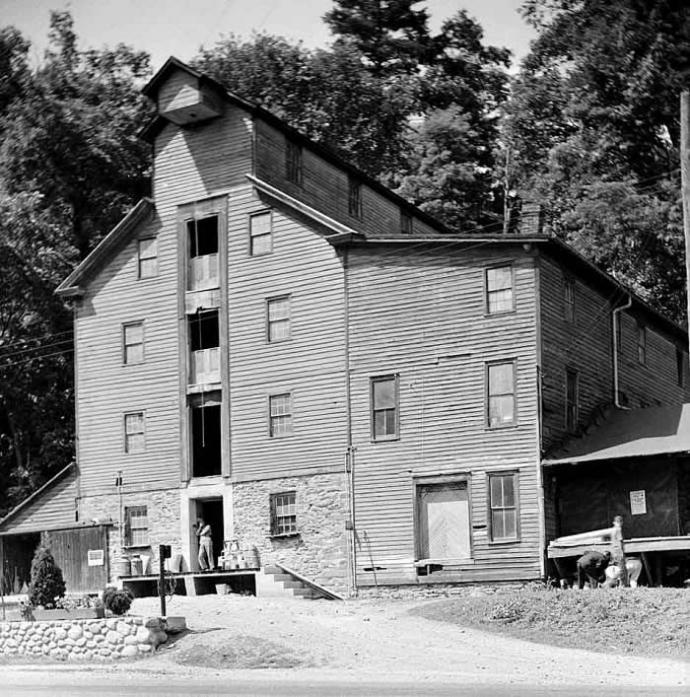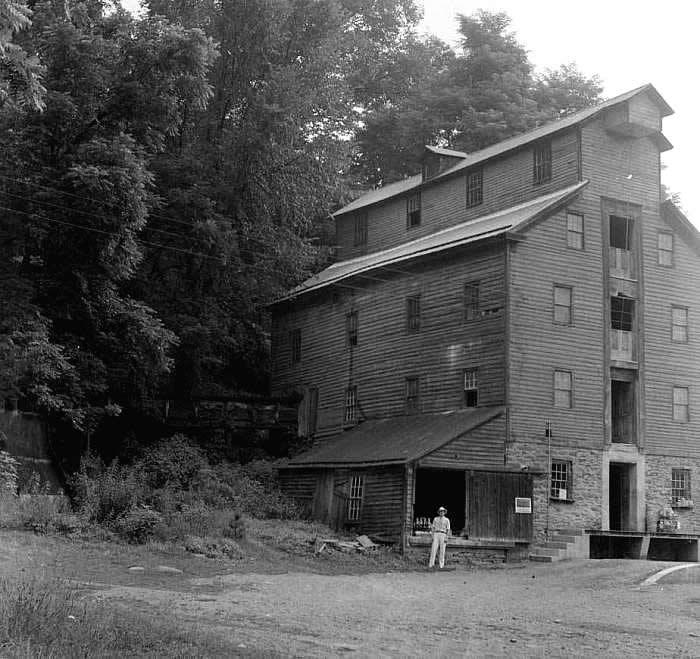
Kintner Milling Co. Inc.
Wyoming Co. | Pennsylvania | USA
Watersource: Mehoopany Creek.
Kintner Milling Co. Inc.
Drive northwest of Tunkhannock, Pa. on US 6 for 5 miles, then turn left/southeast onto Pa 87. Go another 5 miles, crossing over the Susquehanna River to community of Mehoopany. The mill is on Pa 87 along Mehoopany Creek near Mehoopany.
View Larger Map

This red frame mill stands 3.5 stories tall with a clerestory added that runs the full depth. The main structure measures about 45'x45', with an addition on the left side of about 30'x?'. The sack hoist projects from the front of the clerestory. Info. received the mill was torn down in 2009-2010.

This is an old postcard when the mill was known as the Jennings Grist Mill. E.K. Sturdevant, Photographer about 1910.Historic American Buildings Survey of the Paul Bishop Jennings' mill that dates from 1842. The original mill was built in 1806 a short distance above this mill. Paul Bishop Jennings came to this area and built a saw and grist mill in 1831. Joseph T. Jennings took over the mill after his father retired who had been a clerk in his father's store and helping out in the mill. His son, John B. Jennings then took over the operations after his father and the mill remained in the possession of the Jennings for 68 years. Vintage photos supplied by Ted Hazen.

The Old Mill in May 2013. Most of the mill was torn away sometime between 1992 and 2013. The remnant is back, off Pa 87, behind the Fire Station diagonally across Pa 87 from the Dandy Mini Mart in North Mehoopany.

It then went to several owners. S. A. Secor for two years; Roy Hardie for five years;one year by Case Vaughn, and Will Colt for two years. Then it became the ownership of the Kintner Family. The mill was built in 1823, and was added on by M. S. Kintner who operated the mill until March of 1920. The new partnership which was formed include Hartley Kintner with M. S. Kintner, Jr., Fisher Wells, Jr., and Clayton Welles. They began to modernize the mill and stopped wheat and buckwheat production. They added a story to what was a four story building, and the clerestory monitor. They added the right side of the mill which both sides had been added in the late 19th century. They added stone wall foundations which were 20 feet tall which sat on 20 foot foundations into the ground, new exterior and interior wood construction.The mill was always run entirely on water power. The old wooden water wheel was replaced bout 1908 with a modern steel Fitz Water Wheel. It was 24 feet in diameter. The covered sluice way had been replaced a number of times and is about an eighth of a mile above the mill. Originally there was a small plaster mill on the left side of the mill but it was later removed. Photoby Stanley Jones, July 1938 for HABS.

The entire structure had been modernized with new doors, and machinery which migrated in the direction of the mixed feed business. The flooring on the third floor is original and was used to hold bins for storing wheat and corn. In November of 1949, the Kintner Milling Company began to make extensive improvements to their dam and water rights at Jenningsville. In April 1981, the Kintner mill property was sold to the FWM Volunteer Fire Company who was looking to incorporate a portion of the old mill into a new fire station. Photo by Stanley Jones, July 1938 for HABS.